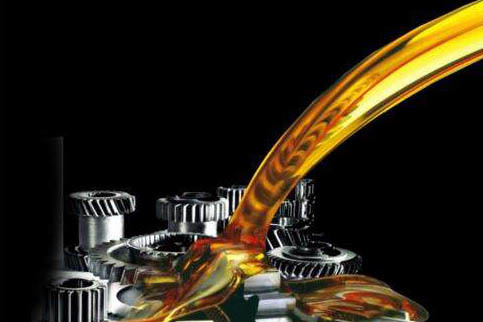Comparison of Performance of Synthetic Lubricants
Release time:
Apr 16,2025
The thermal safety of polyolefin oil is comparable to that of diester oil and superior to mineral lubricating oil.
(1) Viscosity temperature performance and low-temperature performance
Due to the fact that the main component of polyalkenes is long-chain alkanes, they have good viscosity temperature characteristics and are far superior to mineral oils of the same viscosity. Compared with mineral oils of the same viscosity, poly (a) - based hydrocarbon oils have good low-temperature flowability and a higher viscosity index. The data shows that various trimers and tetramers of alpha olefins with different carbon numbers have high viscosity indices, low pour points, and low temperature viscosities, especially the trimers and tetramers of C8~C12a olefins are most suitable for preparing high-performance lubricating oils
(2) Thermal oxidation stability and thermal safety
The thermal oxidation stability of poly (a) - olefin semi synthetic oil is better than that of mineral oil. Compared with mineral oil, poly (a) - olefin oil has better oxidation stability. 4.02/s mineral oil was oxidized by air in the presence of metals such as steel, aluminum, copper, and lead at 1631C for 40 hours, and its viscosity increased by 560% and oil sludge was significantly produced. However, the viscosity change of poly (a) - olefin oil (4.0 dish nV8) under the same conditions was only 211%, and there was no sludge. However, the weight loss of lead flakes in PAO was 2.8 times higher than that in mineral oil.
The thermal safety of polyolefin oil is comparable to that of diester oil and superior to mineral lubricating oil. Heating PAO 4 oil at 135 zhang with a metal catalyst for 168 hours resulted in a viscosity increase of only 15%, while mineral oil with the same viscosity increased by 30%. Due to the fact that poly (alpha olefin) oil is mainly composed of isoparaffins, it does not contain aromatic hydrocarbons or gum after hydrogenation, and is not easily prone to carbon deposition at high temperatures- The order of thermal stability of olefin oil is that dimer is superior to trimer, and trimer is superior to tetramer. This is because the most unstable part of the molecule is the part connected to the tertiary carbon atom, which is also hydrophilic; Branches in the carbon chain of a molecule. High oligomers contain more branched chains, making them more prone to thermal degradation. The mixed oil of polyolefin oil and diester or polyol ester has good thermal stability, and this mixed oil has been widely used in many high-end lubricants.
(3) Traction coefficient
Polyolefin has a lower traction coefficient, which can reduce the traction force related to lubricants when used as gear oil, thus saving power.
(4) Sensitivity to additives
Polyalkene oil is an oil product made by the hydrogenation of magnesium saturated molecules with a high purity of residual double bonds. Polyalkene oil without additives has poor high-temperature oxidation stability. On the contrary, mineral lubricants contain impurities such as sulfur and nitrogen, which are natural antioxidants and have a certain degree of antioxidant effect. Polyalkene oil has a particularly good sensitivity to antioxidant additives. For example, PA0 6 oil residue 175? Under €, the oxidation of lSH results in an acid value of i OmgKOH/g, After adding 0.5% zinc dibutyldithiocarbamate, it takes 104 hours to reach the same acid value under the same conditions.
Poly (a) - Can hydrocarbon oil has poor abrasion resistance and solubility of certain additives. According to some studies, its anti-wear properties are not as good as esters and mineral oils, and corresponding anti-wear agents need to be added. Another disadvantage is poor solubility for certain additives. It can be solved by adding a small amount of ester oil.
(5) Toxicity
Polyalkene oil is non-toxic and has good skin permeability. The purity of poly (alpha olefin) oil is high, especially the 25 alpha hydrocarbon polymerized oil composed of ethylene oligomers. The oil does not contain aromatic hydrocarbons, making it non-toxic and non irritating to the skin. The LD50 of acute oral poisoning in rats is greater than 15g/kg. The white oil prepared from poly (alpha olefin) oil can meet the specifications of food grade white oil. Polyalkene oil has good skin and hair wetting properties and can be used in cosmetics, moisturizers, and hair conditioners.
(6) Adaptability to rubber
Polyaolefin oil can cause certain rubbers to shrink and harden, which can affect sealing performance. Rubber expansion agent needs to be added for this purpose. Rubber expansion agents can be vinegar based oils (such as dibutyl phthalate and sebacic acid esters), as well as alkylbenzene or alkyl naphthalene (such as dodecylbenzene or dodecylnaphthalene).



